GE Refrigerator Water Dispenser Troubleshooting: Quick Fixes
Is your GE refrigerator’s water dispenser acting up? Maybe it’s not dispensing water, working too slowly, or leaking all over your kitchen floor.
Whatever the issue, it’s frustrating, inconvenient, and probably leaving you wondering what went wrong. The good news? You don’t need to be a repair expert to figure it out. In this guide, we’ll walk you through simple troubleshooting steps to identify and fix common problems with your GE refrigerator water dispenser.
Whether it’s a clogged filter, air in the lines, or something else entirely, we’ve got you covered. Stick around, and by the end of this article, you’ll feel confident tackling the issue and getting your fridge back in perfect working order. Let’s dive in!
Common Issues With Ge Refrigerator Water Dispensers

Having trouble with your GE refrigerator water dispenser? You’re not alone. Many homeowners encounter hiccups with their water dispensers, and the good news is most issues are easy to fix without calling a repair technician.
Let’s dive into some of the most common problems and what you can do to troubleshoot them.
1. Water Dispenser Not Dispensing Water
A water dispenser that won’t dispense water is frustrating. Start by checking if the water supply line is connected and turned on. If it is, inspect for kinks or blockages in the line that might be stopping the flow of water.
Another quick check is the water filter. A clogged or old filter can restrict water flow, so replace it if it hasn’t been changed in the last six months. Still not working? Ensure the door switch is functioning properly, as the dispenser won’t work if the fridge door isn’t fully closed.
2. Water Tastes Or Smells Strange
Does your water taste metallic or have an odd smell? This is often due to an overdue water filter. GE recommends replacing your filter every six months for optimal performance.
If you’ve recently changed the filter and the problem persists, flush the system by dispensing several cups of water to clear out any trapped air or impurities. Consider checking your home’s water quality as well—sometimes the issue starts before the water even reaches your fridge.
3. Water Leaking From The Dispenser
Leaks are a common nuisance. If you notice water pooling under the dispenser, check the drip tray for overflow. Emptying and cleaning it might solve the issue.
If the leak continues, inspect the water line connections at the back of the fridge. Loose or damaged connections can cause leaks, so tighten them or replace any faulty parts. Also, ensure the water pressure in your home isn’t too high, as excessive pressure can cause leaks.
4. Dispenser Light Not Working
A non-functioning light may seem minor, but it can be inconvenient. First, check if the bulb is burnt out and replace it if necessary. Refer to your GE refrigerator manual for the correct bulb type.
If the bulb is fine but the light still doesn’t work, the issue might be with the light switch or the control board. In this case, you might need professional help to diagnose the problem.
5. Water Dispenser Freezes
Is your water dispenser freezing up? This often happens when the fridge temperature is set too low. Adjust the temperature settings to the recommended level, usually between 37°F and 40°F.
If the issue continues, the water line in the door might be frozen. Try defrosting it by leaving the door open for a while, or use a hairdryer on a low setting to gently thaw the line. Be careful not to overheat the plastic components.
Addressing these common problems doesn’t require advanced technical skills. When you take a few simple steps to troubleshoot, you save time and money—and avoid the frustration of a non-functioning dispenser. Which of these issues have you encountered? Share your experience and let’s solve it together!
Water Flow Problems
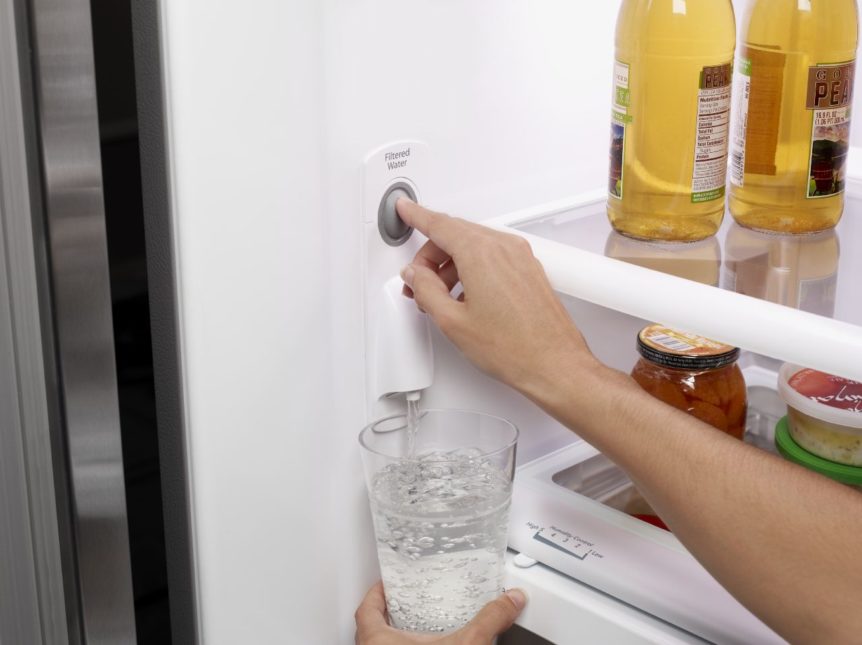
Water flow problems in your GE refrigerator’s water dispenser can be frustrating, especially when you’re in need of a quick glass of water. These issues often stem from common causes that are easy to fix with a little troubleshooting. Let’s dive into two key areas that might be affecting your dispenser: low water pressure and no water dispensing.
Low Water Pressure
Is your dispenser barely trickling water? Low water pressure might be the culprit. This issue is often linked to the refrigerator’s water supply line or the water filter.
- Check the water supply line:Ensure the valve supplying water to your fridge is fully open. A partially closed valve can restrict water flow.
- Inspect for kinks:Look at the water line behind your fridge. If the tube is bent or kinked, straighten it to restore smooth water flow.
- Replace the water filter:A clogged filter can reduce pressure. Replace it if it hasn’t been changed in the last six months.
Tip: If you’re unsure about the water pressure in your home, try testing the flow at a nearby faucet. This can help you pinpoint whether the problem is specific to your fridge or a broader plumbing issue.
No Water Dispensing
Nothing coming out of the dispenser? Don’t worry—it’s likely something simple. Start by checking a few key components.
- Verify the water filter:A poorly installed filter can block water flow. Remove and reinstall the filter correctly.
- Inspect the water inlet valve:This valve controls the water entering your fridge. If it’s faulty or clogged, it might need cleaning or replacement.
- Confirm the door is fully closed:Many GE refrigerators have a safety feature that stops water flow when the door is ajar. Double-check that the door is tightly shut.
Have you ever skipped regular maintenance on your fridge, only to face a sudden issue like this? Keep that in mind as you troubleshoot—preventive care can save you time and hassle.
Still stuck? Ask yourself: Could a frozen water line be the problem? Ice buildup inside the dispenser tube is another common cause, especially in colder settings. Defrosting the fridge can often resolve this.
By addressing these specific points, you’ll likely have your GE refrigerator’s water dispenser back to normal in no time. Take charge of the small fixes, and you’ll avoid bigger headaches later!
Water Tastes Or Smells Unusual
Does your GE refrigerator water taste strange or have an off-putting smell? This can be more than just a minor annoyance—it might signal an issue that needs attention. Let’s dive into the common reasons behind this problem and how to fix it.
Filter Replacement
The water filter plays a crucial role in maintaining the taste and quality of your water. Over time, it can become clogged with impurities, leading to unpleasant flavors or odors. If you haven’t replaced your filter in the last six months, it’s time to do so.
Check your refrigerator’s manual to locate the filter and confirm the correct replacement model. GE refrigerators usually come with twist-and-lock or push-to-release filters, making replacement easy. Once installed, run a few gallons of water through the dispenser to flush out any trapped air or loose particles.
Still noticing an odd taste? Double-check that the filter is seated correctly. A loose connection can allow unfiltered water to mix with filtered water, altering the taste.
Cleaning The Dispenser
When was the last time you cleaned your water dispenser? Residue from minerals and bacteria can build up over time, impacting both taste and smell. A quick cleaning session can work wonders.
Start by wiping down the exterior of the dispenser with a damp cloth and mild soap. For the inside, mix one tablespoon of white vinegar with one cup of water. Dip a clean sponge or cloth into the solution and thoroughly clean the dispenser nozzle and surrounding area.
Don’t forget to clean the drip tray! These trays often collect stagnant water, which can turn into a breeding ground for bacteria. Rinse the tray under warm water and dry it before placing it back.
If you’ve cleaned and replaced the filter but the water still tastes off, consider whether your home’s water supply might be the issue. Municipal water can sometimes carry its own set of flavors or smells. Have you noticed similar issues with your tap water?
By replacing your filter regularly and keeping your dispenser clean, you can enjoy crisp, fresh-tasting water every time. Give these steps a try, and see the difference in your next glass of water.
Dispenser Not Responding
Is your GE refrigerator water dispenser refusing to cooperate? A dispenser that won’t respond can be frustrating, especially when you’re craving a cold glass of water. But don’t worry—this issue is often easier to fix than you might think. Let’s break it down step by step and see if we can get your dispenser working again.
Power Supply Check
First things first: Is your refrigerator getting power? It might sound obvious, but sometimes the simplest checks solve the problem. Make sure the fridge is plugged in securely and the outlet is working.
If the outlet seems fine, check your circuit breaker. A tripped breaker can cut off power without warning. Reset it if necessary and see if the dispenser responds. If the breaker trips again, there could be an electrical issue that needs professional attention.
Also, confirm that the refrigerator’s internal light turns on when you open the door. If it doesn’t, this might indicate a power issue with the fridge itself. Fixing this could bring the dispenser back to life.
Control Lock Feature
Did you know your GE refrigerator might have a control lock feature? This is designed to prevent accidental use but can leave you scratching your head if activated. Look for a small lock icon on your control panel.
To disable it, press and hold the lock button (or a similar button, depending on your model) for about three seconds. Once the lock is off, try the dispenser again. If it works, you’ve just solved the problem!
If you’re unsure about the button location, refer to your user manual or search for your specific model online. Manufacturers often have detailed guides to help with features like this.
Does this sound like your issue? Give these simple fixes a try and see if your water dispenser gets back to work. If not, there are other troubleshooting steps to consider, but starting with the basics can save you time and effort.
Water Leaks From The Dispenser
Water leaks from the refrigerator dispenser can be frustrating and messy. These leaks often indicate underlying issues with the water system. Identifying the cause can help fix the problem quickly. Below, we explore common causes and troubleshooting tips to resolve dispenser leaks.
Inspecting The Water Line
The water line connects the refrigerator to your home’s water supply. A damaged or loose water line can cause leaks. Start by turning off the water supply to the refrigerator. Then, carefully inspect the line for visible cracks or holes. Tighten any loose connections to ensure water flows smoothly.
If the water line appears damaged, it may need replacement. Use a replacement line compatible with your refrigerator model. This will help prevent future leaks and maintain proper water flow.
Checking For Internal Cracks
Internal cracks in the dispenser components can lead to water leaks. Remove the dispenser cover to inspect internal parts. Look for cracks in the reservoir or tubing that hold water. Even small cracks can cause noticeable leaks.
If you find cracks, replace the damaged parts immediately. Use manufacturer-approved replacement components for your GE refrigerator. Proper replacement ensures the dispenser works efficiently without leaking.
Ice Maker And Dispenser Issues

Dealing with ice maker and dispenser issues in your GE refrigerator can be frustrating, especially when you rely on it for cold drinks or ice on demand. Some problems are minor and fixable in minutes, while others may require a bit more effort. Let’s tackle two common issues you might face and how to handle them effectively.
Clogged Ice Chute
A clogged ice chute is one of the most common reasons your dispenser stops working. Ice can clump together and block the path, especially if the dispenser isn’t used regularly or the freezer temperature fluctuates. When the chute is blocked, the dispenser can’t push the ice through, leaving you with an empty glass and mounting frustration.
To fix this, start by checking the chute for visible blockages. Open the freezer door and inspect the chute for stuck ice or frost buildup. Use a plastic spatula or a wooden spoon to gently dislodge any ice—never use sharp tools as they can damage the chute.
Once the blockage is cleared, wipe the chute with a clean, dry cloth. You can also run warm water through the chute to melt any residual frost, but make sure to dry it thoroughly afterward. Does this issue keep coming back? You might need to check if the freezer is set to the right temperature (ideally around 0°F or -18°C).
Resetting The Ice Maker
If your ice maker isn’t producing ice or the dispenser isn’t working as expected, a simple reset might fix the problem. Sometimes, the ice maker can get stuck or lose its calibration, especially after a power outage or a sudden temperature change. Resetting it can help re-sync its operations.
To reset the ice maker, locate the reset button. In most GE refrigerators, it’s a small button near the ice maker unit—usually labeled or found under the front cover. Hold the button for about 10 seconds until you hear a beep or the mechanism starts to move.
After resetting, wait a few hours to see if the ice production resumes. If it doesn’t, check the water supply line to ensure it’s not kinked or blocked. Is the water filter overdue for replacement? A clogged filter can also prevent the ice maker from working efficiently, so swap it out if necessary.
Addressing these issues doesn’t need to be overwhelming. Have you tried these steps already? If so, and the problem persists, it might be time to call in professional help or refer to your GE refrigerator’s manual for further troubleshooting tips.
Preventative Maintenance Tips
Proper maintenance keeps your GE refrigerator water dispenser running smoothly. Simple habits can prevent common issues and extend its lifespan. Regular care ensures clean water and efficient performance. Below are key preventative maintenance tips to follow.
Regular Filter Changes
The water filter plays a critical role in ensuring clean, fresh water. Over time, filters collect dirt and impurities, reducing water quality. Change the filter every six months or as recommended by GE. Monitor water flow for signs of clogging or reduced pressure. Use only GE-approved filters for compatibility and effectiveness.
Keeping The Dispenser Clean
A clean dispenser prevents bacteria and mineral deposits from affecting water quality. Wipe the dispenser nozzle weekly using a damp cloth and mild soap. Remove any visible residue or sticky spots. Avoid harsh chemicals that may damage the surface.
Conclusion
Troubleshooting your GE refrigerator water dispenser can feel overwhelming at first. By following simple steps, you can often fix common issues yourself. Check for clogged filters, frozen lines, or faulty valves. Regular maintenance helps prevent future problems and keeps your dispenser running smoothly.
If problems persist, professional help may be the best option. Staying proactive saves time and ensures your refrigerator works efficiently. Remember, a little effort now can lead to hassle-free use later. With these tips, you’re better prepared to handle dispenser issues confidently and quickly.

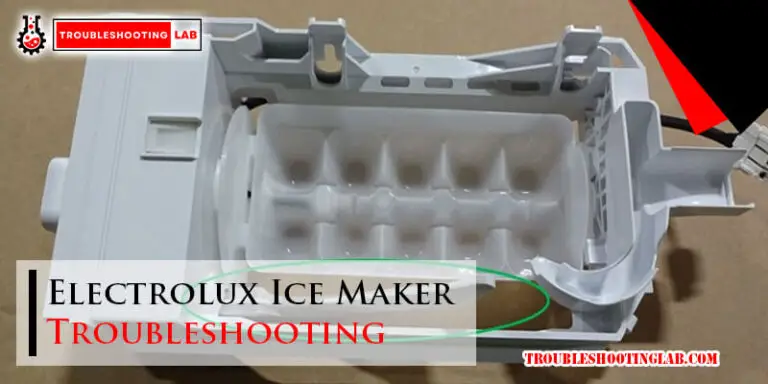
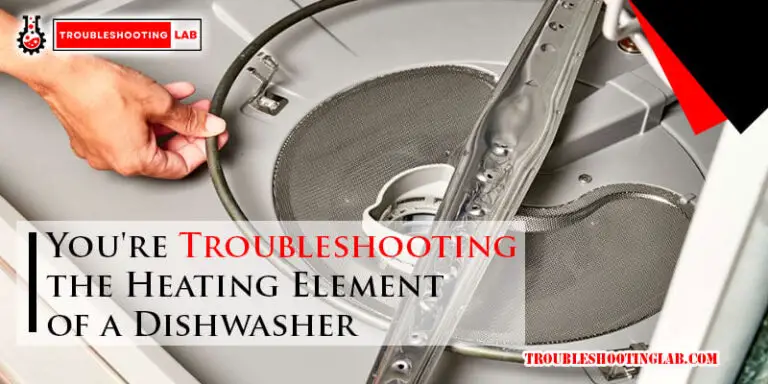
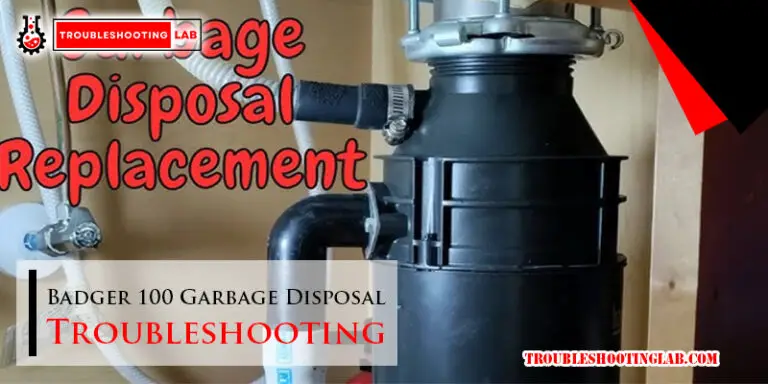
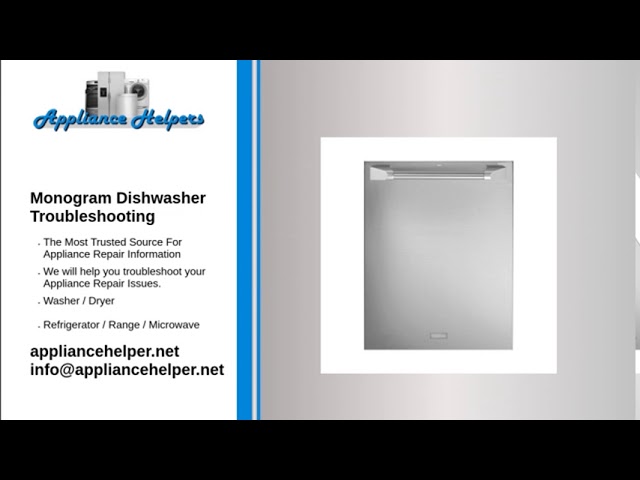

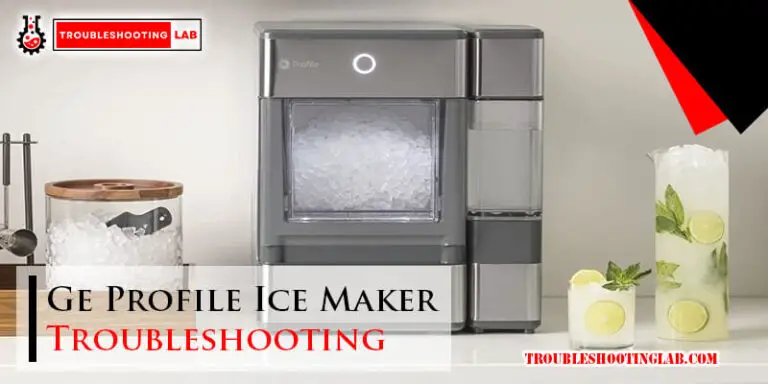
Excellent website. My GE water dispenser – when I try to get water from the dispenser it pours water out of the bottom and not from the plastic tube. Any ideas would most appreciated.
2004 KenmoreColdSpot
Model 106.55522400
It’s a oldie but still a goodie
Thanks for the kind words! On your 2004 Kenmore Coldspot (106.55522400), water dumping from the bottom when you press the paddle usually means a disconnected/cracked water line near the lower door hinge, a frozen dispenser tube in the door, or a leak at the filter housing/reservoir. The steps in our GE Refrigerator Water Dispenser Troubleshooting guide apply to many Kenmore/Whirlpool-built units too.
Quick Step-by-Step Checks
Pro tip: If water immediately pours from the bottom when you press the paddle, the hinge-area coupler or door line is the prime suspect—re-seat or replace that fitting/line first.
Check our full guide here for photos and part tips, and feel free to share what you find at the hinge or filter area—let me know if this helps!